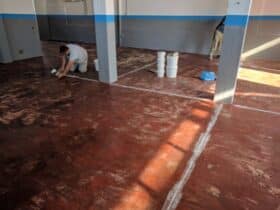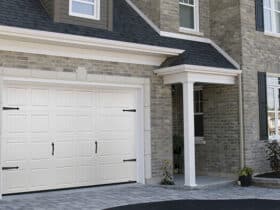There’s a reason why California is currently experiencing a boom in ADU, or accessory dwelling units, development. There’s a housing shortage going on in the sunshine state.
ADUs provide much-needed rooms for individuals, all while giving homeowners an extra bedroom or source of income. Sadly, in the past, it’s been difficult for some property owners to build ADU on their lots.
Luckily, new 2021 ADU laws are changing that. If you want a breakdown of these new laws, then you’re in the right place. In this article, we’ll teach you everything you need to know. That way, you can decide whether or not building an ADU is the right decision for you.
You Can Now Add Two Units
This is the biggest part of the new California ADU laws. Homeowners can now add up to two ADUs on their property. The first is known as an ADU, and the second is referred to as a junior accessory dwelling unit (or JADU).
That means that legally a single plot in California can now turn into a triplex. This is a big deal for landlords that rent out their ADUs. What are the sizing regulations on these new units?
Well, the first ADU you build can be no larger than 1,200 square feet. By contrast, the JADU can be no larger than 500 square feet. As such, it will need to be smaller than your initial ADU.
You Don’t Need to Occupy the Home to Build an ADU
In the past, you had to live in the property that you were using for an ADU. Now, that’s no longer the case. The new law states that you can build ADUs on any property as long as you own them.
This is sure to the benefit of landlords that own multiple properties. Just keep in mind that this might not be permanent. The legislature comes under review starting January 1, 2025.
And, while it might stay the same, it also has the potential to change. So, you should be prepared if it does.
Barriers Removed On Local Laws and HOA’s
The new California laws prevent state governments from imposing various laws on the building of ADUs. For starters, they need to approve ADU plans within sixty days. They no longer require four-foot rear and side yard setbacks on ADUs.
They may also no longer block the building of ADUs that don’t conform to zoning standards due to the correction of physical conditions. The new law also limits the amount of authority that an HOA has on whether or not you can build an ADU.
In the past, an HOA could prohibit or restrict your ability to build or rent an accessory dwelling unit. This is no longer the case. What’s more, you can now build ADUs in historic districts and on properties that are subject to historic preservation.
There’s More Financial Aid Available
California is desperate for more low to mid-income level housing. And, to show it they’re providing a variety of economic incentives for building ADUs. These include things like state grants, tax breaks, and other financial incentives.
This makes it much more economically feasible to build ADUs for people who were once on the fence. If you want to learn more about financial aid for ADUs, then make sure to check out this comprehensive list provided by the California Department of Housing and Community Development (or HCD).
Fewer or Lower Fees
In the past, ADUs were subject to a one-time impact fee by local agencies. While this might not seem like a big deal, they were quite expensive.
Ostensibly this was to offset an impact that the ADU had on local, public infrastructure (like water, roads, electricity). But, these fees could often be $23,000 or more for a small single-family home).
Many homeowners could simply not afford this fee on top of contracting costs. As such, any ADU that is under 750 square feet is no longer subject to this type of impact fee.
If an ADU is larger than 750 square feet, then it’s subject to a more fair pricing scheme. The fee is determined by taking into account both the square footage of the home and the ADU.
Fewer Requirements on Parking
In the past, it was also hard to build ADUs in garages. This is because you had to provide an additional replacement parking spot. On top of that, you no longer have to adhere to ADU parking standards if you meet certain conditions. These conditions include:
- Being within half a mile of public transportation
- Being a part of an existing residence
- Being in a historic district
How Do You Start Building an ADU?
Hopefully, these new laws have convinced you that building an ADU is a feasible idea for your living arrangement. So, what’s the next step. Well, now you need to find an ADU builder in your area.
They can meet with, talk about viable plans, and come up with a plan/estimate on how much the project will cost. Just make sure that you choose a professional ADU contractor, like Acton Construction.
Your contractor should have a lot of years of experience under their belt. This is important because they need to know the trade and have the right contacts for the various contractors that you’ll need for the project.
Enjoy Learning About ADU Laws? Keep Reading
We hope this article helped you learn more about ADU laws. This new legislature is a clear sign that the local government is encouraging the development of accessory dwelling units.
As such, you should make sure to take advantage of them while you still can. This is due to the fact that many of them will come under review in a few years’ time.
Did you enjoy this article? If the answer is yes, then you’re in the right place. Keep exploring to find more topics that you’re sure to love.















